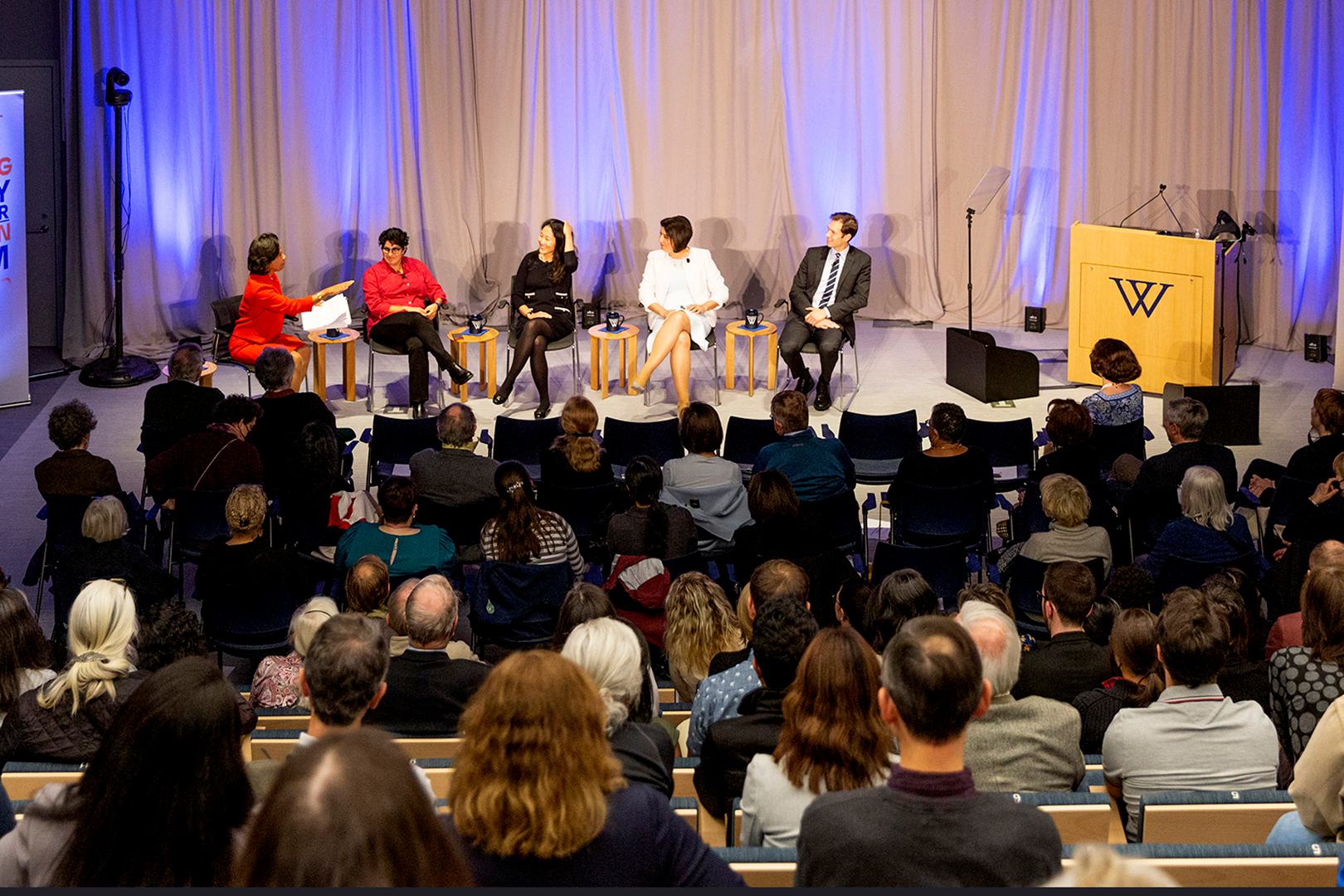Wellesley formally opened its reimagined Science Complex on October 3 with a celebration that included state officials, alumnae, current and emeriti faculty, staff, and students.
In her opening remarks, President Paula A. Johnson said Wellesley has led the way in science education, “establishing one of the country’s first undergraduate physics labs, and one of the first biochemistry programs at a liberal arts college.” She noted that 80% of Wellesley’s STEM graduates attend graduate or professional school within 10 years of graduation, making Wellesley a top national producer of women who earn advanced degrees in STEM. To achieve its goals of inclusive excellence and expanding opportunities for students in STEM, she said, Wellesley needed to make a critical investment in the Science Complex, “the largest and most significant capital project ever undertaken by the College.”
Lt. Gov. Karyn Polito thanked Johnson and Wellesley for creating a cutting-edge space where students and faculty can work on challenges that face society. She described the efforts she and her colleagues are making through the Massachusetts STEM Advisory Council to address issues of representation in K-12 education.
“This new building is a tribute to your future,” said keynote speaker Dr. Reshma Kewalramani, CEO and president of Vertex Pharmaceuticals and the first female CEO of a large biotech company. She said she is committed to helping others break barriers because she believes society’s future depends on it. “We all share this responsibility to reverse the status quo,” she said. “The absence of diversity will undermine technology, medicine, and our society.”
During a panel discussion on changing the culture of STEM, Johnson and Kewalramani were joined by U.S. Rep. Jake Auchincloss; Dr. Dana Im ’10, director of quality and safety in the department of emergency medicine at Brigham and Women’s Hospital/Harvard Medical School; and Nergis Mavalvala ’90, dean of the MIT School of Science and Curtis and Kathleen Marble Professor of Astrophysics at MIT.
Mavalvala noted that diversity is important in STEM because “some of the problems we’re trying to solve are so darn hard” that all good ideas need to be heard. Im agreed: “We need to emphasize diversity and inclusion, so that we can advocate for our patients and also to empower our patients in striving for health equity and health care.” Johnson thanked Auchincloss for his political leadership and asked for his take on the significance of diversity in STEM. He said his mother—Dr. Laurie Glimcher, president and CEO of Dana-Farber Cancer Institute—is “trailblazing female scientist” and that her career has “mapped the arc of improvement for women in science,” though there is much more work to be done. He also mentioned her father, Melvin Glimcher, a son of Russian Jewish immigrants who became the first tenured chair in orthopedic surgery at Harvard Medical School. “The broader theme of inclusion in science is really personally meaningful to me, because it’s done so much for my family.
Visit Wellesley’s YouTube channel to watch the full event. Click here to learn how students felt about the new science complex when it first opened to them in spring 2022.
